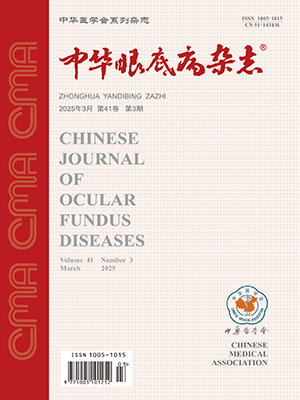Purpose To observe the features of the hyperfluorascent areas in the posterior ocular fundus detected by indocyanine green angiography(ICGA) in healthy volunteers, and to study circulatory properties of choroid. Methods Routine ICGA was performed on each of fifty consecutive normal eyes. Results ⑴Hyper fluorescence began at an average time of (30.80 plusmn;5.42) seconds. ⑵The patterns of the hyperfluorescence revealed themselves in doubling areas divided symmetrically by the relatively hypoer fluorescence blelt running horizontally across the fovea in 29 eyes(58%), and single area in 21 eyes(42%).⑶The average area of the hyper fluorescence was (57.27 plusmn;14.08)mm2.⑷ The sustaining time of the hyper fluorescence was (172.44 plusmn;59.70) seconds at average. Conclusion During ICGA, a very patchy filling pattern of hyper fluorescence was visible in posterior fundus in normal eyes, and its filling time and shape presented choroidal blood supply and circulation. These parameters would offer consulted bases for clinical diagnosis of the choroidal diseases. (Chin J Ocul Fundus Dis,1999,15:1-3)
Citation: GUO Xirang,ZHAO Zhaoxia,LI Yunsui. Significance of the hyperfluorescent areas in the posterior ocular fundus demonstrated by indocyanine green angiography in healthy volunteers. Chinese Journal of Ocular Fundus Diseases, 1999, 15(1): 1-3. doi: Copy
Copyright © the editorial department of Chinese Journal of Ocular Fundus Diseases of West China Medical Publisher. All rights reserved




